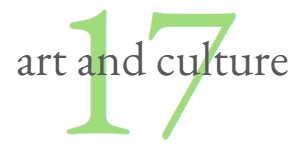
Grief and Aesthetics
“Las Meninas is like a chamber of the mind, a place where the dead will never die. The gratitude I feel to Velázquez for this greatest of paintings is untold; he gave me the consolation to return to my own life.” — Laura Cummings, art critic

Kathleen Higgins is a professor of Philosophy at the University of Texas at Austin, specializing in aesthetics, the philosophy of music and the philosophy of emotion.
Her most recent book, “Aesthetics in Grief and Mourning: Philosophic Reflections on Coping with Loss (2024),” offers ways that our perception of beauty in art, culture and nature can help us regain meaning, identity and purpose.
Kathleen Higgin’s essay Grief and Aesthetic Means of Reorientation rings true for me and is particularly helpful. Disorientation is an unsettling state of doubt about time, place or who one is. It is a major component in the everyday experience of grief. It is a major component of dementia.
The following is a series of excerpts and condensations that I hope lead to personal recognition and a full reading. I impose subjectivity in the selection. Every disorienting feature reminds me of a personal example. Every aesthetic offer was personally experienced as well.
Disorienting Features of Grief
The beloved person has vanished and this disappearance is a shock. It is as though the person has fallen through cracks in the time-space continuum. Poet and philosopher Denise Riley describes, “death does such violence to your ordinary suppositions… the sun can’t any longer be relied on to rise.”
One’s own body feels alien… shivering, numbness, weeping, vague impressions of bodily boundaries, a sense that internal organs are exposed, and generalized malaise.
Grieving people find signs of the deceased in their environment… a pen on the loved one’s desk is experienced as connected with the loved one in a much more fundamental way than when the person was alive.
Past, present and future may be jumbled. Because the loved one is no longer living into the future, the impression of subjective time seems to have come to a standstill.
Michael Cholbi observes: our values, commitments and concerns are dependent on relationships with other people. Shared patterns become untrustworthy. This is called “double contingency.” It’s hard to find mutuality with other people who can’t predict or actions or how comments will settle with us.
The floods of spontaneous memories of the deceased are disordered and unanchored to the present. We lose our clear sense of the person and what the relationship has been. The desire to fix this can lead to obsession with the last encounter with the deceased. The image of the angry or hostile ghost is perhaps a reflection of this situation.
The Value of Aesthetic Phenomena
Most societies specify specific rituals to be performed after someone’s death, required as part of what is necessary to “do right” by the dead. Behavior is synchronized and restores social embeddedness. This answers, at least temporarily, the challenges of double contingency. Death rituals testify that the loss is collective and not only private.
Engagement with artworks allows grieving people to connect with the external while still in a transitional state. One is free from social pressure to decide and may find a way to reflect and play. In shared experience, this provides a way to overcome the sense of isolation as in meditative silence during rituals or listening to music together. This allows for a sense of mutuality without agreement on presuppositions.
Aesthetic experience with a fictional world can offer footholds and guidance. Arthur Frank said that stories provide companionship in demanding circumstances. We can learn from the way characters handle their circumstances.
The aesthetic is an aspect of our experience in which we commonly engage with people who are no longer living. We enjoy artworks created by dead artists. Informal aesthetic traditions like the style of celebrating holidays, decorating a home, serving dinner, are handed down through generations. Feeling linked to the deceased enables one to recognize ways the person continues to have an impact on one’s life.
Concluding thoughts
Grief often saps motivations. We may resist action, thinking that it will move us farther from the deceased loved one. Aesthetic practices help us heal and continue.
An example is provided by art critic Laura Cummings after the death of her father:
The painting I saw that day seems to hold death back from the brink even as it acknowledges our shared human fate. It shows the past in all its mortal beauty, but it also looks forward into the flowing future. Because of Velázquez, these long-lost people will always be there at the heart of the Prado, always waiting for us to arrive; they will never go away, as long as we are there to hold them in sight. Las Meninas is like a chamber of the mind, a place where the dead will never die. The gratitude I feel to Velázquez for this greatest of paintings is untold; he gave me the consolation to return to my own life.